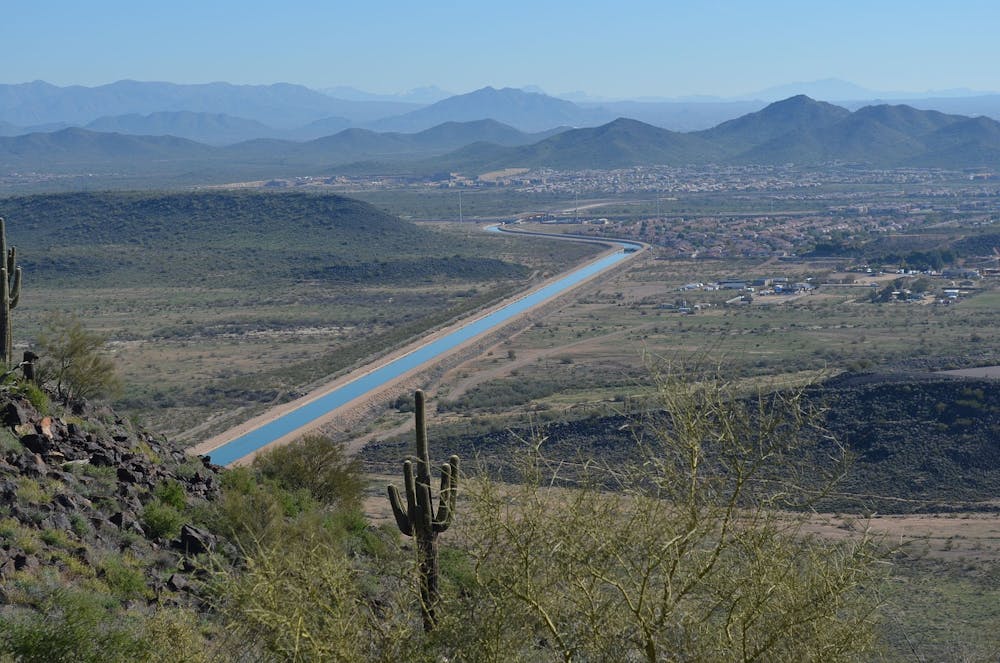The Central Arizona Groundwater Replenishment District's water management strategies have created risks of water shortage for Buckeye residents, according to a recent report.
The Central Arizona Project, the canal that supplies water from the Colorado River to vast areas of Arizona, will not be able to guarantee water in upcoming decades to growing cities like Buckeye due to imminent Colorado River water shortages, according to the report.
"This issue is really about the replenishment obligation of the CAP," said Sarah Porter, director of the Kyl Center for Water Policy, which published the report.
To lower the chances of a water shortage, the city recognizes its own responsibility to replenish its water supply to the best of their abilities.
Another factor is the recently passed Colorado River Drought Contingency Plan, which limits the amount of water states can take from the river based on the water level in Lake Mead.
The report states Central Arizona Project water deliveries "could be reduced by as much as 720,000 acre-feet per year" if Lake Mead falls below the set level. An acre-foot is the amount of water it takes to fill one acre of land one foot deep, or 325,851 gallons.
There are additional concerns due to the growing population within Arizona, specifically the Phoenix metropolitan area, with Buckeye and surrounding cities growing so rapidly. According to a population estimate released by the U.S Census Bureau, Buckeye is the fastest growing city in the country.
“There are all these homes enrolled and potentially they will be built and it will be the job of the CAP to find the water that needs to be replenished as a result of all of this new demand, and there’s a good likelihood that it can't find the water,” Porter said.
One of the main issues with the way the groundwater replenishment district is set up is that its insufficient examinations have contributed to a financial burden for the Arizona population.
“The people who wind up covering the costs are the homeowners, and the cost is a line in their property tax bill,” Porter said.
These costs are built up due to the groundwater replenishment district performing annual assessments to predict the cost of replenishing excess groundwater for member lands.
“People probably don't have a high degree of awareness that they’re paying an assessment for the CAGRD, and they may be quite unpleasantly surprised to suddenly have a much higher assessment than they had before,” Porter said.
According to the Kyl Center’s report, the cost of purchasing water rights and replenishment infrastructure was $60 per acre-foot in 2000 and rose to $403 per acre-foot in 2011 in the greater Phoenix area.
Buckeye’s hydrologist, Ron Whitler, said the city treats and replenishes its wastewater in Tartesso, a master-planned community in Buckeye, using a groundwater savings facility to limit the amount of replenishing the groundwater replenishment district has to do.
The city is also making sure water-efficient technologies are in place so citizens will be able to keep tabs on where they use the most water when their bill is high.
Annie DeChance, communications manager for Buckeye, said the city utilizes electronic reader units that monitor each house’s water usage. Now, due to recent updates, they can do more with that data.
“We can download the information through the cloud, and we use that data when a customer calls in,” DeChance said.
This data allows the city to know immediately when water is being used and the person can identify if there might be a leak or sprinklers running overnight, for example, DeChance said.
Buckeye uses wastewater treatment, but some practices like sprinklers can be especially wasteful, making the technology even more useful.
"A huge amount of the water that your average household uses still goes to outside landscaping," Porter said. "Water down the drain can be captured and reused."
Photo licensed under CC BY-SA 3.0.
Reach the reporter at baharr21@asu.edu or follow @bharris823 on Twitter.
Like The State Press on Facebook and follow @statepress on Twitter.




